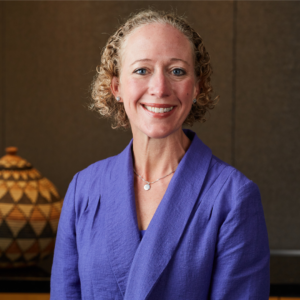QIS: An Update
The Quality Indicator Survey (QIS)-that intriguing potential substitute for the not-much-beloved OBRA nursing home survey process-is marching right along, with 16 states now altogether involved to some extent in adopting the program. Five of those states-Arizona, Delaware, Georgia, Maine, and Vermont-have just begun training their surveyors for this, with anticipated launch of QIS surveys next summer. Other states where QIS is almost fully operational and trained surveyors could be knocking on your door any day now are Connecticut, Florida, Kansas, Louisiana, and Minnesota. Less further along are Ohio, North Carolina, Maryland, New Mexico, Washington, and West Virginia. Providers in these (and other) states may have a general idea of what to expect from a QIS-highly structured resident interviews, for example-but even so, misconceptions and misunderstandings still abound. Recently Peter Kramer, Executive Vice President and COO of Nursing Home Quality, LLC, the Centers for Medicare & Medicaid Services contractor that is training state survey agencies in the QIS rollout, offered clarification on several issues in an interview with Long-Term LivingConsulting Editor Richard L. Peck.
Peck: In a nutshell, if possible, how does QIS compare with the traditional state survey process?
Kramer: There are maybe a dozen aspects of comparison between the two, all of which are covered in a brochure on the QIS available at our Web site, https://www.nursinghomequality.com. However, to focus on a few key areas, one is the resident sampling process, which under QIS is both random and much broader than the traditional approach. Stage 1 of the QIS randomly selects 40 residents from the census for most of the Stage 1 assessments, as well as a sampling of 30 residents who have been admitted during the previous six months. Because the selection is random, it means the facility’s past performance, whether good or bad, doesn’t figure into the survey; the survey team is starting afresh, without preconceptions. As for the size of the sampling, this has to do with the need to develop statistically valid inferences that a Stage 2 investigation of possible noncompliance is needed.
Another key difference for the QIS is the resident interview process conducted during Stage 1. The randomly selected census residents are interviewed directly by the surveyor in structured fashion, with questions asked word for word, no matter who is conducting the interview. Again, this is to better confer statistical validity on the findings. If, by the way, a resident is deemed by the surveyor to be too cognitively impaired for an interview, the surveyor may reach out to a family member for this. The way the numbers would typically break down, in a census sampling of 40, perhaps 25 of the residents will be found to be interview-able and 15 will not and, of that 15, a minimum of three family interviews will occur.
Peck: Does staff have to be prepared to oversee this interview process?
Kramer: No, staff will not be in attendance and, in fact, it is preferred that they not be. If the facility has some apprehension about what might happen or be said during an interview, I would encourage administrators to obtain the actual interview forms themselves and use them to interview the residents themselves. Facilities that have tried this have reported learning a lot about their operations.
Peck: What else happens with the QIS surveys other than the resident interviews?
Kramer: Stage 1-which lasts about 12 hours altogether-also encompasses resident observation, staff interviews on issues of clinical importance, two records reviews (of the census and admission samplings), and an MDS review. Each surveyor has access to only a quarter of the sample and no findings are made on compliance or noncompliance at this stage. Facilities will find that the surveyors aren’t very talkative during this stage and wouldn’t know enough at this point to comment anyway.
After the Stage 1 processes are completed, the survey team transitions to Stage 2. The transition synthesizes the interviews, the MDS data, and other assessments and, using software designed for this, focuses in on areas of potential noncompliance. Again, this is very structured and goes considerably beyond assessments provided by the MDS items, Quality Indicators (QIs), and Quality Measures (QMs) used in traditional surveys. All in all, the QIS encompasses 162 Quality of Care and Quality of Life Indicators which includes 44 MDS items, 24 of which are QIs and QMs. Clearly, therefore, the QIS is much broader than the standard survey.
Peck: Is follow-up on QIS deficiencies the same as currently done, e.g., return visits, Plans of Correction, and so on?
Kramer: Yes, follow-up on deficiencies will essentially be the same, procedurally, as the traditional survey process.
Peck: Did you have any further thoughts to offer on this new process?
Kramer: Two things: This is a fair survey process for the facility because the surveyors come in not knowing what they’re looking for and not using past performance as a guide; facilities don’t have to cope with preconceived notions. Second, this is a system that can be learned, and facilities can start doing so now. All documents are readily available at https://www.uchsc.edu/hcpr/qis_manual.php and a great deal of information is presented that addresses questions that facilities may have on our Web site https://www.nursinghomequality.com.
To send your comments to the editor, e-mail mhrehocik@iadvanceseniorcare.com.
Sidebar
This is a fair survey process for the facility because the surveyors come in not knowing what they’re looking for and not using past performance as a guide; facilities don’t have to cope with preconceived notions.
-Peter Kramer
Related Articles
Topics: Articles , Facility management , Regulatory Compliance










